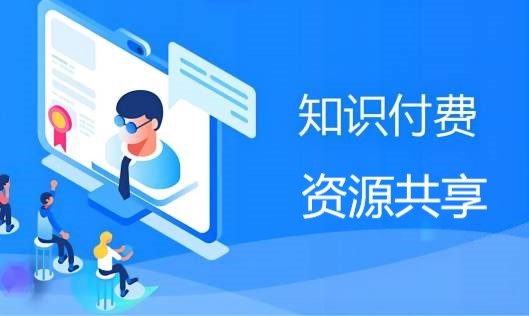| J线下人力资源培训机构经营现况及对策研究 摘 要 在当今社会对国民素质要求越来越高的前提下,社会对知识型人才需求日益高涨,人才培训需求呈多元化、深度化发展,专业知识型培训机构的出现乃大势所趋。同时,在“互联网+”的时代背景下,线上培训机构发展迅速,传统培训机构正面临“瓶颈期”,转型势在必行。本文采取访谈法,对J这一线下人力资源培训机构进行调查研究,分析其所处现状及存在问题:(1)传统线下培训机构受到来自线上培训机构的冲击;(2)学生观念发生改变导致学生来源相较于之前呈下降状态;(3)公共卫生安全突发事件——新冠疫情受到政府防疫措施限制导致收益骤减;(4)机构本身缺乏有效的反馈机制。针对以上传统线下培训机构存在的问题,采用文献分析法,提出以下四方面的建议:(1)搭建机构线上教育培训平台,拓展培训渠道;(2)推出多种课程方案,能够提供给客户更多的选择,满足差异化需求;(3)建立公共卫生突发事件应急机制,为以后出现相似状况做好准备,防范于未然;(4)注重并建立相应的培训反馈机制,与此同时也提高受训者们的反馈意识,让受训者能积极配合做好培训后的反馈,以便培训机构总结经验教训进行改善。 关键词:传统培训机构;转型;疫情;机制 Research on the current situation of human resource training institutions —— Take JY institution as an example Abstract Under the premise of higher and higher requirements for national quality in today's society, the social demand for knowledge-based talents is rising day by day,the demand for talent training shows diversified and in-depth development,and the emergence of professional knowledge-based training institutions is the general trend. At the same time, in the era of "Internet plus",online training institutions are developing rapidly, and traditional training institutions are facing a "bottleneck period", so the transformation is imperative. This paper conducts an investigation and research on J, a front-line human resource training institution,and analyzes its current situation and existing problems :(1) Traditional offline training institutions are impacted by online training institutions;(2) The change of students' concept leads to the decrease of student sources compared with the previous situation; (3) Public health security emergencies -- coVID-19 is restricted by the government's epidemic prevention measures, resulting in a sharp decrease in revenue; (4) The organization itself lacks an effective feedback mechanism. Aiming at the problems existing in the above traditional offline training institutions,literature analysis is adopted to put forward the following four Suggestions :(1) To build an online education and training platform for institutions and expand training channels; (2) Launch a variety of course plans,which can provide customers with more choices and meet differentiated needs; (3) Establish a public health emergency response mechanism to prepare for similar situations in the future and prevent them before they happen; (4) Pay attention to and establish the corresponding training feedback mechanism, and at the same time improve the trainees' feedback awareness, so that trainees can actively cooperate with the feedback after training, so that training institutions can summarize the experience and lessons for improvement. Keywords: traditional training institutions;transformation;epidemic;mechanism 目 录 一 绪论·······························································1 (一)选题背景·························································1 (二)选题目的与意义····················································1 (三)调研内容和方法···················································1 1、调研内容····························································1 2、调研方法····························································2 二 相关概述及理论基础·················································2 (一)人力资源培训机构的相关概念········································2 1、人力资源的概念·······················································2 2、人力资源培训与开发的概念············································2 3、线下人力资源培训机构的概念··········································3 (二)国内外研究现状···················································3 1、国外研究现状························································3 2、国内研究现状·························································4 三 J人力资源培训公司概况及经营现状····································5 (一)行业背景··························································5 (二)公司概况·························································5 1、机构简介····························································5 2、机构组织架构························································5 (三)J机构SWTO模型分析··············································6 1、SWOT模型概述·······················································6 2、J机构SWOT分析·······················································7 四 J线下人力资源培训机构存在的问题···································9 (一)外部因素·························································9 1、线上培训机构的冲击···················································9 2、学生培训观念的改变··················································10 3、新冠疫情的持续影响··················································12 (二)内部因素·························································13 1、机构本身缺乏有效的反馈机制··········································13 (三)机构营收收入急减少···············································14 五 针对J线下人力资源培训机构现存问题应对措施·························15 (一)搭建线上平台·····················································15 1、授课的形势··························································15 2、培训平台的搭建······················································15 3、用户拉新工作························································15 (二)推出各种课程方案 ················································15 (三)建立公共卫生应急机制·············································16 (四)建立相应的培训反馈机制···········································16 六 结论·····························································17 (一)结论·····························································17 (二)研究不足·························································17 参考文献······························································19 附录··································································20 致谢··································································22 |
J线下人力资源培训机构经营现况及对策研究
更新时间:2024-07-08




